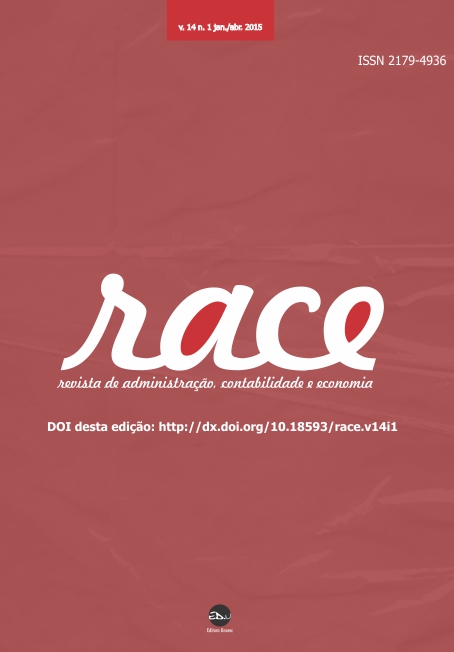THE LINK BETWEEN EARNINGS MANAGEMENT AND DIGITAL PATTERN / O elo entre gerenciamento de resultado e padrão digital
DOI:
https://doi.org/10.18593/race.v14i1.4065Resumo
According to Dechow and Dichev (2002) and Lin and Wu (2014), a high degree of earnings management (EM) is associated with a poor quality of information. In this sense, it is possible to assume that the financial data of companies that manage earnings can present different patterns from those with low degree of EM. The aim of this exploratory study is to test whether a financial data set (operating expenses) of companies with high degree of EM presents bias. For this analysis, we used the model of Kothari and the modified model of Jones (“Dechow model” hereafter) to estimate the degree of EM, and we used the logarithmic distribution of data predicted by the Benford’s Law to detect abnormal patterns of digits in number sets. The sample was composed of 845 international listed non-financial companies for the year 2010. To analyze the discrepancies between the actual and expected frequencies of the significant-digit, two statistics were calculated: Z-test and Pearson’s chi-square test. The results show that, with a confidence level of 90%, the companies with a high degree of EM according to the Kothari model presented similar distribution to that one predicted by the Benford’s Law, suggesting that, in a preliminary analysis, their financial data are free from bias. On the other hand, the data set of the organizations that manage earnings according to the Dechow model presented abnormal patterns. The Benford´s Law has been implemented to successfully detect manipulated data. These results offer insights into the interactions between EM and patterns of financial data, and stimulate new comparative studies about the accuracy of models to estimate EM.
Keywords: Earnings management (EM). Financial Reporting Quality (FRQ). Benford’s Law.
Downloads
Publicado
Como Citar
Edição
Seção
Licença
Autores mantêm os direitos autorais e concedem ao periódico o direito de primeira publicação, com o trabalho simultaneamente licenciado sob a Licença Creative Commons - Atribuição-NãoComercial 4.0 Internacional, que permite o compartilhamento do trabalho com reconhecimento de autoria e publicação inicial neste periódico.




























